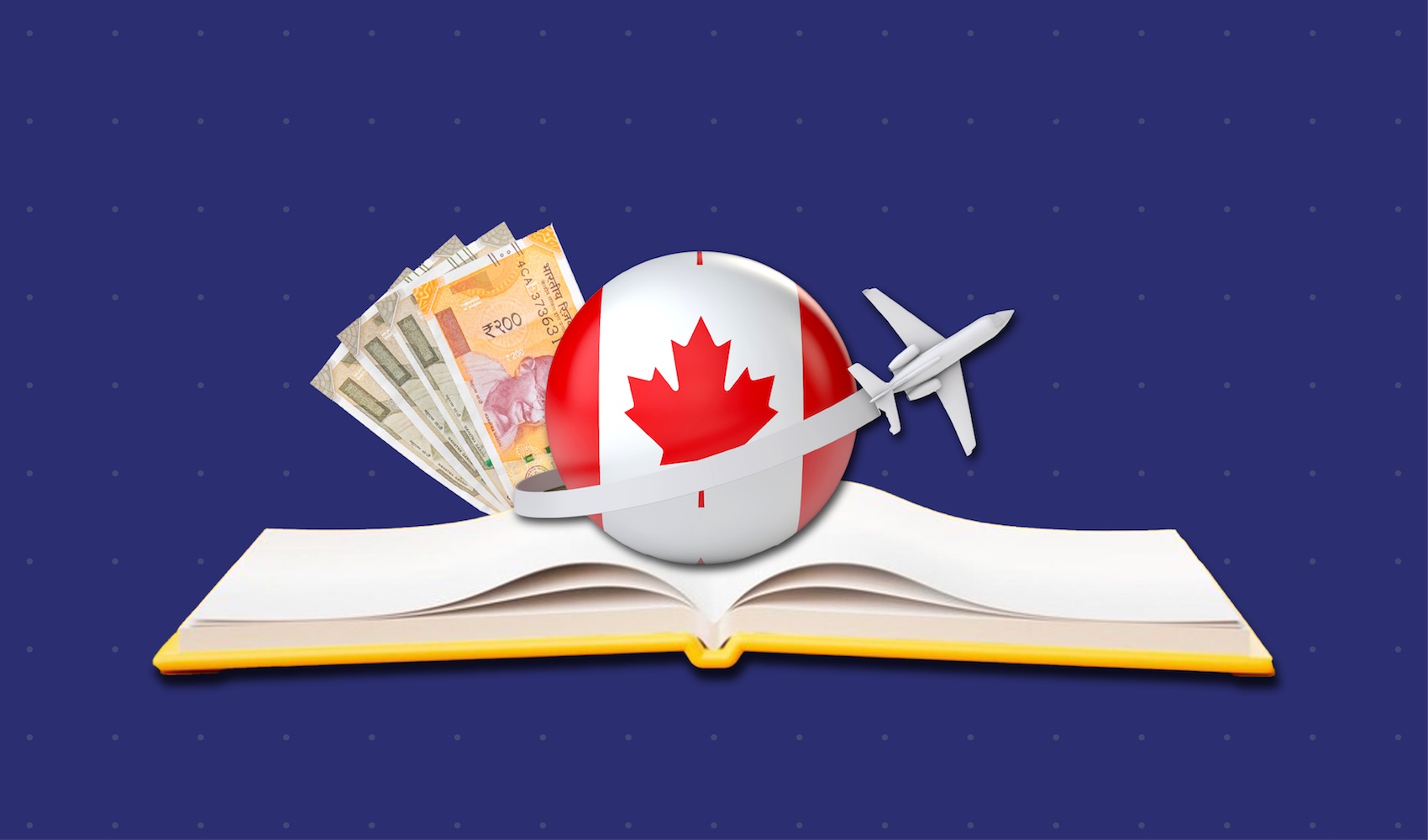Summary
- The main difference between a forex card and a debit/ credit card is that the forex rate is ‘locked in’.
- Where the currencies are bought and sold is called the ‘forex market’ and it is active 24 hours a day, 7 days a week.
- Some companies allow the forex rate to be locked in on the date of loading, while others have a ‘fixed’ rate that changes weekly.
Among the dozen things that an international has to juggle before heading off to their university is forex, which is often overlooked in its complexity.
To help manage your finances while abroad, you should use a forex card, as millions of others do. It lets you ‘load’ different currencies onto a single card at a fixed exchange rate.
In this article, we will cover the most important things you’ll need to know about forex.
Let’s get started.

What is Forex?
Forex is the short form for ‘foreign exchange’. More specifically, when someone says ‘Forex’ they usually mean the process of buying, selling, or converting currencies. Where the currencies are bought and sold is called the ‘forex market’ and it is active 24 hours a day, 7 days a week.
An exchange rate specifies how much one currency is worth in terms of another currency. For example, at the time of writing, 1 USD is worth about 84.6 Indian Rupees. Thus, the forex rate for ‘USD and INR’ is 1:84.6.
International students frequently convert their ‘home’ currencies into foreign currency, so they need to keep an eye on the forex rates. A change in the rates can affect how much money you have to spend on living expenses and tuition, among other things.
In extremely rare cases, two countries may agree to ‘peg’ their currencies to one another. This results in a fixed forex rate. 1 USD is equal to exactly 3.6725 Dirhams, just as it was in 2004. However, such arrangements are few and far between. Most countries have their currencies traded on the open market, with prices affected by supply and demand.
Now that we know what ‘forex’ is, let’s look at what a forex card for students is and how it works.
Also Read: Study Abroad Guide for Indian Students 2024
What is a forex card for students?
A forex card for students is a prepaid card designed specifically for international students. For all intents and purposes, it works just as a regular (debit) card would. You can pay at point-of-sale (POS) merchants, use it for e-commerce, and to withdraw cash from ATM machines.
The main difference between a forex card and a debit/ credit card is that the forex rate is ‘locked in’. Some companies allow the forex rate to be locked in on the date of loading, while others have a ‘fixed’ rate that changes weekly. This helps you circumvent the fluctuations that currencies have with one another.
For example, say you’re studying a Master’s program in the USA. You have a large purchase to make, which is prepaying your student accommodation of $12,000. On Monday, the exchange rate has dropped due to a political issue between the USA and India, at 82 rupees to the dollar. By Wednesday, the forex rate is back up to 85 rupees to a dollar.
If you’d paid on Monday with a debit card, you’d have paid INR 9,84,000. On Wednesday, with that same debit card, you’d have paid INR 10,20,000. That’s a difference of 36,000 rupees. And don’t forget that you’d have two additional fees, one from the merchant (usually 1%) and a forex fee from the bank (usually 1% to 3%). Most forex cards will waive these fees for pre-loaded funds. That’s another benefit, as 4% of 10 lakhs is about 40,000 rupees that you’ll save in waived fees.
Next, let’s explore why you need a forex card when planning to study abroad.
Also Read: 5 Most Affordable Universities in the USA for Indian Students
Why do you need a forex card when planning to study abroad?
Here are the main reasons why every Indian student should be using a forex card when studying abroad:
- India is the fastest growing economy in the world.
- As a result of that, our currency, the rupee, is traded a lot on the open market. Using a forex card will lock in exchange rates, so that they are not affected by currency fluctuations.
- Forex cards almost always offer a ‘net benefit’. For instance, their exchange rate may be a little higher than the market at the time, but they’ll waive the transaction fees. Example: the HDFC forex card for students has a zero cash surcharge on ATM withdrawals worldwide.
- You can load only the amount you plan to spend, helping you stick to your budget.
- Many cards allow you to hold several currencies, useful for travel between countries. For instance, the SBI forex card for students has nine supported currencies, including the USA Dollar, Japanese Yen, UAE Dirham, and the Pound Sterling.
- If lost or stolen, the card can be quickly blocked and replaced, protecting your funds. And again, since you’ve only loaded the amount you planned to spend, your entire life savings or credit are not at risk.
- Most cards come with apps or online portals to help you monitor your spending, just like debit or credit cards would.
- Many offer perks like travel insurance or discounts on international purchases. For example, the Axis forex card for students gets you a free international SIM card in your destination country, and comes with ISIC (International Student Identity Card) benefits.
Those were the main benefits of using forex cards for students abroad. In the next section we’ll take a look at the different types of forex cards that are available for you to choose from.
Also Read: How to Secure an Education Loan for Study Abroad?
Types of student forex cards
There are 2 main types of student forex cards available in India right now: single-currency cards, and multi-currency ones.
-
Single-currency Forex Card
This card is loaded with one specific foreign currency, and is best if you’re planning on being in only one currency zone, like the USA, or the EU. Example: If you’re doing a master’s in the USA, you could just load up USD and use it as needed. Single currency cards usually carry slightly better exchange rates than multi-currency ones. However, if you need to use another currency, at an airport for example, you’d pay high exchange tariffs.
-
Multi-currency Forex Card
A multi-currency forex card supports multiple currencies on a single card. Students who plan to move countries frequently, or those in exchange programs usually opt for this version. This saves you from carrying around a different forex card for each country.
Here is a table outlining the main differences between the two card types:
| Aspect | Single-Currency Forex Card | Multi-Currency Forex Card |
| Currency Support | One specific currency | Multiple currencies (USD, EUR, AUD, etc.) |
| Best For | Students staying in one country | Students traveling between multiple countries |
| Currency Conversion Fees | Not applicable (for one country) | No fees between supported currencies |
| Convenience | Simple and easy for single-country use | Ideal for students moving between countries |
Next, let’s explore how to get a forex card for free.
How to get a forex card for free?
While forex cards typically come with issuance fees, there are ways to obtain them for free or at a reduced cost.
Here are some strategies:
- Currently, in October 2024, you can get the HDFC forex card for students for free if you load more than USD 1,000 on the card. If you do that, they waive the issuance fee by 100%.
- Some universities have tie-ups with banks or financial institutions, providing students with free or discounted forex cards as part of their admission package.
- If you’re already a customer of a bank, you might be eligible for a free forex card as a loyalty reward.
- If you’re booking your flights through a travel agent or agency, then they usually offer a forex card as an add-on. They might waive the fees for you, especially if you are a returning customer.
- Some issuers provide free virtual forex cards when you apply online, saving on physical card production costs.
- If you and a friend apply together, many exchanges (that issue forex student cards) will give both of you an issuance fee waiver.
Please remember that while getting a free card is nice, it’s not always the best option. Also, be wary of predatory terms and conditions. Some issuers might have minimum balance requirements, or forfeit clauses, or require the card to be held for a minimum period.
Another tactic that forex card providers use is to have no fees to open a student forex card, but they’ll charge money to close the card, and have a minimum balance. To get that minimum balance back you’ll need to close the card and pay a fee. Thus, a card with a small issuance fee might save you more in the long run if it offers better rates or lower transaction fees.
Those were a few methods by which you could get a forex card for free. In the next section, we will discuss how to use your forex card optimally.
Tips for using your forex card optimally
You must use your card wisely to maximize the benefits and avoid unnecessary charges.
Here are a few tips to help you use your forex card:
- Load your card with the amount you expect to need, considering your budget and upcoming expenses. This helps avoid frequent reloads and associated fees.
- When possible, make transactions in the local currency to avoid dynamic currency conversion fees. For example, say you’re an international student in London. If you’ve loaded GBP and EUR on your card, and are traveling for a vacation to France, set the default currency to ‘EUR’ in the forex card app. Most people forget to do this, and the currency used might remain GBP, and you’ll lose out in currency conversion charges.
- If you have a multi-currency card, learn how to switch between currencies to always use the most advantageous one.
- While ATM withdrawals are convenient, they often incur fees. Plan your cash needs to minimize withdrawals.
- Some providers have partnerships with international banks. Using their ATMs might result in lower or no withdrawal fees.
- Regularly check your card balance through the provider’s app or online portal. This helps you stay within budget and avoid declined transactions, which often come with fees (around $5).
- Inform your forex card provider of your travel dates and destinations to prevent your card from being blocked due to suspected fraudulent activity.
- Many forex cards come with travel-related discounts or cashback offers. Stay informed about these to maximize your savings. For instance, the Axis forex card for students comes with a lot of hotel benefits around the world.
- Some providers charge inactivity fees. Make small transactions periodically if you’re not using the card regularly.
Lastly, let’s explore how you can save even more money on your overall study abroad experience.
In our next section, we’ll discuss how GradPack can help you save on various aspects of your international education.
How to save money on studies, accommodation, health insurance & forex with GradPack?
GradPack is an all-in-one package designed to help international students save on essential expenses while studying abroad. GradPack provides international students with the ability to save significant amounts on education loans, accommodation, health insurance, and forex cards, among other things.
One of the standout benefits of GradPack is its access to forex services at a lower-than-bank markup.
This means students can obtain forex cards with competitive exchange rates, avoiding the high fees and unfavorable rates often associated with regular bank-issued cards. By using GradPack, students can save on issuance fees and take advantage of deals that reduce overall financial costs.
GradPack also helps students save betwen ₹8 lakhs through education loans with lower interest rates, which makes financing their studies more manageable.
On top of that, GradPack offers access to scholarships worth up to ₹7 lakhs, further lightening the financial load for eligible students.
In addition to these financial savings, GradPack provides solutions for securing budget-friendly accommodation, helping students save up to ₹20,000 on living expenses. Furthermore, students can save up to ₹6 lakhs on health insurance, a critical component of studying abroad.
With GradPack, international students can confidently manage their finances while maximizing savings on major costs like tuition, living expenses, and healthcare. It’s a must-have resource for students looking to make the most of their budget while studying overseas.
Overall, GradPack is an essential study abroad bundle that can help students save as much as ₹23 lakhs.
Also Read: Accommodation In USA For Students


























































































































































